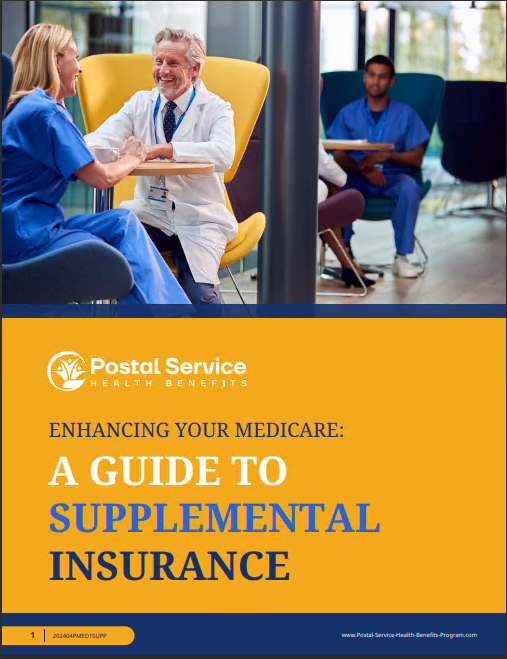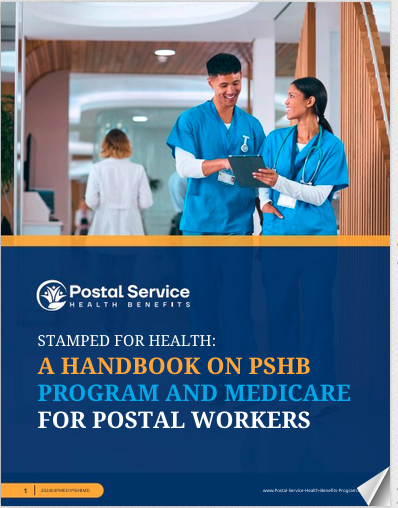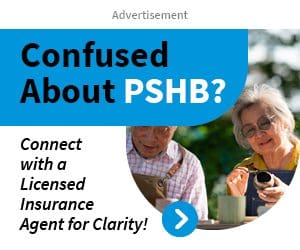Key Takeaways:
-
The Postal Service Health Benefits (PSHB) program offers tailored healthcare options for USPS employees and retirees, replacing the Federal Employees Health Benefits (FEHB) program in 2025.
-
Key changes include integration with Medicare for eligible retirees, cost adjustments, and new plan options to better serve postal workers and their families.
What is the Postal Service Health Benefits (PSHB) Program?
The PSHB program is a dedicated health benefits system exclusively for Postal Service employees, annuitants, and their eligible family members. As of January 1, 2025, this program replaces the FEHB system for USPS participants, providing tailored healthcare coverage that addresses the specific needs of postal workers and retirees.
This change marks a significant shift in how healthcare is managed for USPS employees and annuitants. If you’re part of this group, understanding the nuances of PSHB is essential to maximizing your benefits and minimizing out-of-pocket expenses.
How PSHB Differs from FEHB
If you were previously enrolled in FEHB, you might be wondering how PSHB compares. Here’s what sets it apart:
-
Tailored Coverage: Unlike FEHB, which served all federal employees, PSHB is designed specifically for USPS employees and their families. This focus allows for more relevant plan options and benefits.
-
Medicare Integration: PSHB integrates with Medicare for eligible retirees, offering additional savings and streamlined coverage.
-
Enrollment Requirements: USPS employees, annuitants, and eligible family members must enroll in a PSHB plan to maintain health benefits. Those covered under a family member’s FEHB plan can continue that coverage.
Medicare Enrollment Requirements for Retirees
One of the most significant changes under PSHB is the requirement for Medicare integration. If you’re eligible for Medicare, here’s what you need to know:
-
Mandatory Enrollment in Medicare Part B: If you’re a Medicare-eligible retiree or family member, you must enroll in Medicare Part B to keep your PSHB coverage. Exceptions apply to specific groups, such as retirees who stopped working before January 1, 2025.
-
Coordination of Benefits: By combining Medicare and PSHB, your healthcare costs are often reduced. Medicare becomes the primary payer, with PSHB covering additional expenses.
-
Prescription Drug Coverage: PSHB plans automatically include a Medicare Part D Employer Group Waiver Plan (EGWP), ensuring comprehensive medication coverage.
Cost Implications for Retirees
Healthcare costs are a primary concern for retirees, and PSHB introduces changes that aim to address these concerns. Here’s how your costs are affected:
-
Premium Contributions: While premiums vary by plan, government contributions remain substantial, reducing your overall cost burden.
-
Medicare Part B Premium Reimbursements: Many PSHB plans offer partial or full reimbursement for Medicare Part B premiums, providing financial relief.
-
Out-of-Pocket Costs: Thanks to the integration with Medicare, retirees benefit from lower deductibles, copayments, and coinsurance in most plans.
Plan Options Under PSHB
PSHB offers a variety of plan options to meet the diverse needs of postal employees and retirees. You can expect:
-
Standard and High Option Plans: Choose between plans with varying levels of coverage and premiums to suit your budget and healthcare needs.
-
Special Needs Plans (SNPs): Designed for those with chronic conditions or specific healthcare requirements, SNPs offer tailored benefits.
-
Family Coverage: Comprehensive options for covering spouses and dependents, with the flexibility to align with Medicare when applicable.
Navigating Open Season and Qualifying Life Events
To make changes to your PSHB coverage, it’s crucial to understand the enrollment periods:
-
Annual Open Season: This period runs from mid-November to mid-December each year, allowing you to review and modify your plan.
-
Qualifying Life Events (QLEs): Events such as marriage, divorce, or the birth of a child enable you to adjust your coverage outside of Open Season.
-
Automatic Enrollment: If you were previously in FEHB, you’re automatically enrolled in a corresponding PSHB plan unless you choose otherwise during Open Season.
Maximizing Your Benefits
Making the most of your PSHB coverage requires a proactive approach:
-
Review Your Plan Annually: Healthcare needs can change, so it’s essential to evaluate your plan during Open Season.
-
Take Advantage of Medicare Integration: If you’re eligible, ensure you’re enrolled in Medicare Part B to access cost-saving benefits.
-
Understand Your Prescription Drug Coverage: Familiarize yourself with the Medicare Part D EGWP provided through PSHB to minimize medication expenses.
Benefits for Active Employees
PSHB doesn’t only benefit retirees; active USPS employees also see significant advantages:
-
Comprehensive Coverage: Plans cover medical, dental, vision, and more, ensuring holistic healthcare for you and your family.
-
Streamlined Administration: The USPS-specific focus of PSHB reduces administrative hurdles and simplifies plan selection.
-
Support for Career Transitions: Whether you’re nearing retirement or experiencing other life changes, PSHB offers flexibility to adapt your coverage.
What Happens if You Don’t Enroll?
Failing to enroll in a PSHB plan can have serious consequences. If you’re an eligible USPS retiree and neglect to enroll:
-
You could lose access to health benefits for yourself and your dependents.
-
You might face higher healthcare costs without the cost-sharing advantages of PSHB and Medicare.
Important Deadlines and Timelines
Staying on top of key dates ensures uninterrupted coverage:
-
January 1, 2025: All USPS employees and annuitants transition to PSHB.
-
Mid-November to Mid-December: Open Season for PSHB plan selection.
-
Throughout the Year: QLEs allow you to make coverage adjustments as needed.
How PSHB Improves Healthcare Access
PSHB not only changes costs but also enhances access to healthcare for USPS retirees. Key improvements include:
-
Broader Provider Networks: Plans under PSHB often feature extensive networks, ensuring access to top-tier medical professionals and facilities.
-
Specialized Care Options: Chronic care management, wellness programs, and preventive services are prioritized, improving overall health outcomes.
-
User-Friendly Resources: Online tools and customer support make it easier than ever to manage your benefits and access care.
Preparing for the Transition
The switch from FEHB to PSHB may feel daunting, but you can simplify the process by:
-
Reviewing Available Plans: During Open Season, compare your options to find the best fit for your needs and budget.
-
Seeking Guidance: Reach out to USPS human resources or plan administrators for assistance in understanding your choices.
-
Staying Informed: Keep an eye on official communications to stay up-to-date on deadlines and requirements.
Why PSHB is a Win for Retirees
By focusing on the unique needs of USPS employees and retirees, PSHB represents a significant improvement over FEHB. With tailored plans, Medicare integration, and cost-saving features, the program provides peace of mind and better financial security in retirement.
Unlock the Full Potential of Your PSHB Benefits
Navigating the changes brought by the PSHB program might feel overwhelming, but the rewards are well worth the effort. By staying informed, planning ahead, and taking full advantage of the benefits offered, you can ensure that your healthcare needs are met without breaking the bank.







